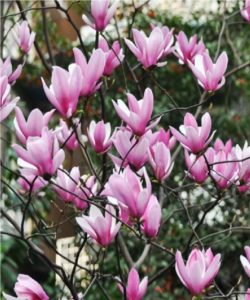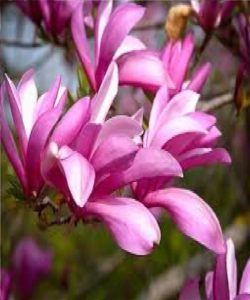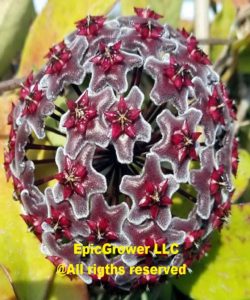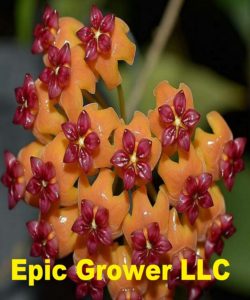Several clients asked about magnolia trees when they notice several different types at our nursery. The large southern magnolia tree with its large white flowers grow symbolizes the south. However, they are many types beyond the regular white to white/pink southern magnolia.
 Magnolia tree types vary greatly: some are evergreens while others are deciduous. Some grow into very tall stately trees and other impressive tall bushes. Flowers range from white to pink to lavender to purple. One type may have large leather leaf while other look like willow leaves.
Magnolia tree types vary greatly: some are evergreens while others are deciduous. Some grow into very tall stately trees and other impressive tall bushes. Flowers range from white to pink to lavender to purple. One type may have large leather leaf while other look like willow leaves.
Magnolia trees flower in the spring into early summer. Yes, some varieties of magnolia trees flower before they produce leaves and some re-bloom during the summer.
What Types of Magnolia Trees does Epic Grower Carry?
Currently, Epic Grower LLC carries the more unusual “Little Girl” magnolia trees: Ann, Jane and Betty. These are hardy and impressive flowering shrub or small tree. These produce impressive spring flowers in the shades of purple-red, purple-white or all purple-lavender flowers. The flowers have tulip shape.
Gives these trees plenty of sun. The Jane and Betty grows up to 15 feet tall in zones 4 to 8. The Ann grows 8 to 12 feet tall with a base of 10ft round. Their grow rate is between 13” to 18” a year (Moderate rate).
As with all magnolias, these loves the sun and moist fast draining soil. Do not plant them in a wet area. If you live in a dry area then partial while they are young works better. Give your magnolia a good thick layer of compost the end of winter. Use a slow time released fertilizer once a year for the first 3-4 years.
 These make excellent specimen trees or a fantastic hedge. The “Little Girl” magnolia trees are deciduous (lose their leaves during winter). They produce tons of flowers and many times they bloom again during the summer in many areas.
These make excellent specimen trees or a fantastic hedge. The “Little Girl” magnolia trees are deciduous (lose their leaves during winter). They produce tons of flowers and many times they bloom again during the summer in many areas.
If you have any growing questions please post them on this blog. Do not send questions to our email. Thank you.


 Hoyas grow in humid warm environments in nature. Very few will tolerate cold weather below 50 degrees for very long. Most hoya plants, once you understand they needs, are easy to maintain. Some grow very slowly while others grow fast. Some are easy to propagate and others very hard. 99% of all hoyas are propagated by cuttings – not seeds
Hoyas grow in humid warm environments in nature. Very few will tolerate cold weather below 50 degrees for very long. Most hoya plants, once you understand they needs, are easy to maintain. Some grow very slowly while others grow fast. Some are easy to propagate and others very hard. 99% of all hoyas are propagated by cuttings – not seeds Hoyas vary in their light requirements to flower. However, 97% of them prefer shaded indirect light. They grow great in covered patio areas with strong indirect light. If you have a covered front porch, they make great hanging or draping plant specimens.
Hoyas vary in their light requirements to flower. However, 97% of them prefer shaded indirect light. They grow great in covered patio areas with strong indirect light. If you have a covered front porch, they make great hanging or draping plant specimens.